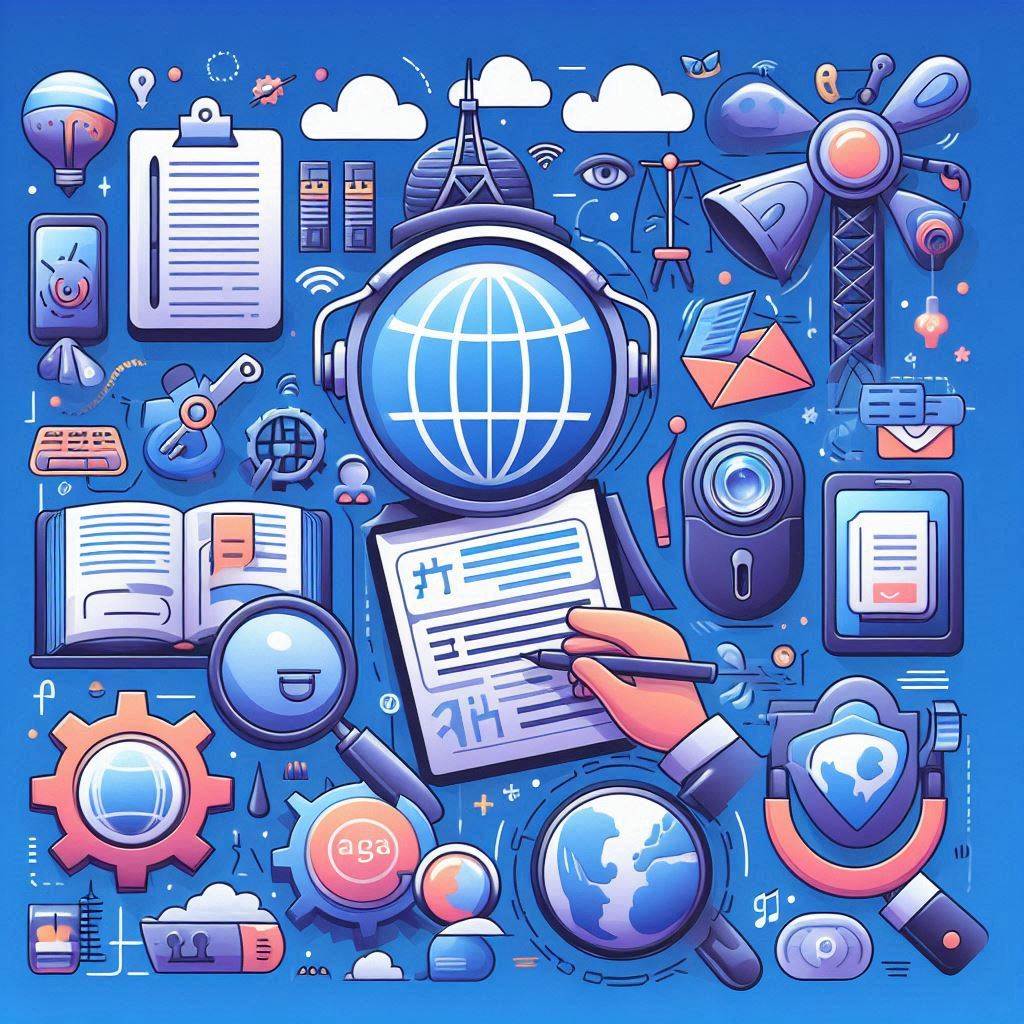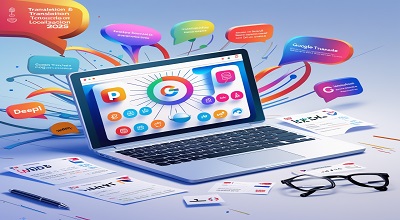Translation and Localization Tools
In an increasingly globalized world, the need for effective translation and localization tools has never been more critical. As businesses and individuals seek to reach wider audiences, the demand for high-quality, accessible translation solutions continues to grow. This article explores the latest updates in free translation and localization tools for 2025, providing insights into their features, benefits, and how they can enhance your multilingual content strategy.
Understanding Translation and Localization
What is Translation?
Translation refers to the process of converting text from one language to another. It involves not just the words themselves but also the context, tone, and cultural nuances that may affect how the message is received by the target audience.
What is Localization?
Localization goes a step further than translation. It involves adapting content to meet the cultural, linguistic, and functional requirements of a specific target market. This can include changes to graphics, currencies, date formats, and even the overall user experience to ensure that the content resonates with local audiences.
The Importance of Translation and Localization Tools
In 2025, the landscape of translation and localization tools has evolved significantly. These tools are essential for:
- Reaching Global Audiences: Businesses can expand their reach by making their content accessible in multiple languages.
- Enhancing User Experience: Localized content improves user engagement and satisfaction.
- Boosting SEO: Properly localized websites can rank better in search engines, attracting more organic traffic.
Latest Updates in Free Translation and Localization Tools
1. Enhanced Machine Translation Capabilities
Recent advancements in machine translation have led to more accurate and context-aware translations. Tools like Google Translate and DeepL have improved their algorithms, making them more reliable for everyday use. These tools now offer better support for idiomatic expressions and cultural references, which are crucial for effective communication.
2. Integration with Content Management Systems (CMS)
Many free translation tools now offer seamless integration with popular CMS platforms like WordPress, Joomla, and Drupal. This integration allows users to manage multilingual content directly within their existing workflows, streamlining the localization process. For instance, plugins like Weglot and ConveyThis enable users to translate their entire website with just a few clicks, maintaining the original design and functionality.
3. User-Friendly Interfaces
The latest translation tools prioritize user experience, featuring intuitive interfaces that make it easy for non-technical users to navigate. This is particularly important for small businesses and freelancers who may not have extensive technical knowledge. Tools like Lokalise and Localizer provide straightforward dashboards that simplify the translation and localization process.
4. Collaboration Features
Collaboration is key in the translation process, especially for teams working on large projects. Many free tools now include features that allow multiple users to work on translations simultaneously, track changes, and leave comments. This fosters better communication among team members and ensures consistency across translations.
5. Support for Multiple File Formats
Modern translation tools support a variety of file formats, including HTML, XML, and JSON. This flexibility allows users to translate not just website content but also software applications, marketing materials, and more. Tools like Phrase and Memsource have made it easier to handle diverse content types, making them invaluable for businesses with complex localization needs.
6. AI-Powered Translation Suggestions
Artificial intelligence is playing a significant role in enhancing translation accuracy. Many tools now offer AI-powered suggestions that help translators choose the best phrasing based on context. This feature is particularly useful for maintaining brand voice and ensuring that translations align with marketing strategies.
7. Community Contributions
Some translation tools leverage community contributions to improve their databases. Platforms like Crowdin and Transifex allow users to contribute translations, which can enhance the quality and variety of available language options. This community-driven approach not only enriches the tool’s offerings but also fosters a sense of collaboration among users.

Top Free Translation and Localization Tools for 2025
1. Google Translate
Google Translate remains one of the most popular free translation tools. With its extensive language support and continuous improvements in machine learning, it offers quick translations for text, websites, and documents. The recent updates have enhanced its ability to handle complex sentences and idiomatic expressions.
2. DeepL Translator
DeepL is known for its high-quality translations, often outperforming other tools in terms of fluency and accuracy. The free version allows users to translate text and documents, while the pro version offers additional features like API access and advanced formatting options.
3. Lokalise
Lokalise is a powerful localization tool that simplifies the translation process for developers and marketers alike. Its free tier allows users to manage translation projects, collaborate with team members, and integrate with various platforms, making it a versatile choice for businesses.
4. Weglot
Weglot is a popular translation plugin for WordPress that enables users to translate their entire website effortlessly. The free version supports a limited number of words, making it ideal for small websites looking to reach a broader audience.
5. Localizer
Localizer offers a straightforward solution for making websites multilingual. Its free plan allows users to translate their site and manage localization from a single dashboard, making it accessible for users without technical expertise.
6. ConveyThis
ConveyThis is another excellent tool for website translation. It automatically translates meta tags, titles, and descriptions, which is crucial for SEO. The free version provides basic translation features, while premium plans offer more advanced options.
7. Phrase
Phrase is a comprehensive localization platform that supports various file formats and integrates with popular development tools. Its free tier allows users to manage translation projects and collaborate with team members effectively.
Best Practices for Using Translation and Localization Tools
1. Understand Your Audience
Before starting the translation process, it’s essential to understand the cultural nuances and preferences of your target audience. This knowledge will guide your localization efforts and ensure that your content resonates with local users.
2. Maintain Consistency
Consistency is key in translation. Use glossaries and style guides to ensure that terminology and tone remain uniform across all translated content. Many tools offer features to help maintain consistency, such as translation memory.
3. Test Translations
Always test your translations in context. This means checking how the translated content appears on your website or application to ensure that it fits well and maintains the intended meaning.
4. Collaborate with Native Speakers
Whenever possible, involve native speakers in the translation process. Their insights can help identify cultural nuances and improve the overall quality of the translations.
5. Keep SEO in Mind
When localizing content, don’t forget about SEO. Ensure that translated meta tags, keywords, and descriptions are optimized for search engines in the target language.
FAQs
1. What are the best free translation tools available in 2025?
Some of the best free translation tools in 2025 include Google Translate, DeepL, Lokalise, Weglot, Localizer, ConveyThis, and Phrase. Each tool offers unique features that cater to different translation and localization needs.
2. How do I choose the right translation tool for my needs?
When choosing a translation tool, consider factors such as the languages you need, the type of content you are translating, integration capabilities with your existing systems, and whether you require collaboration features.
3. Can I use machine translation for professional content?
While machine translation has improved significantly, it’s often best to have professional translators review and edit machine-generated translations, especially for important documents or marketing materials.
4. How can I ensure the quality of my translations?
To ensure quality, maintain consistency in terminology, involve native speakers in the process, and test translations in context. Using translation memory and glossaries can also help maintain high standards.
5. Are there any limitations to free translation tools?
Free translation tools may have limitations such as word count restrictions, fewer language options, and lack of advanced features found in paid versions. It’s essential to evaluate your needs before choosing a tool.
6. How does localization differ from translation?
Localization involves adapting content to meet the cultural and functional needs of a specific audience, while translation focuses solely on converting text from one language to another.
7. What role does AI play in translation tools?
AI enhances translation tools by providing context-aware suggestions, improving accuracy, and enabling better handling of idiomatic expressions. This technology continues to evolve, making translations more reliable.
Conclusion
As we move further into 2025, the landscape of free translation and localization tools continues to evolve, offering more robust features and capabilities than ever before. By leveraging these tools, businesses and individuals can effectively communicate with global audiences, enhance user experiences, and ultimately drive growth in an interconnected world. Whether you’re a small business owner, a freelancer, or part of a larger organization, understanding and utilizing these tools will be crucial for success in the global marketplace.
